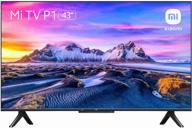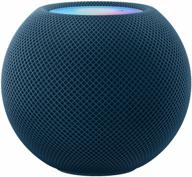
Review on 🎤 Innopow 80-Channel Dual UHF Wireless Microphone System | Metal Cordless Mic Set | Long Distance Range 200-240Ft | 16 Hours Continuous Use for Family Party, Church, Karaoke Night | WM-333 by Josh Sheehan

500MHz bandwidth and excellent range
This product has been used in a variety of ways since it shipped. In general, the design is pretty good. The frequency selection, especially in connection with systems from other manufacturers, seems to be very good. The microphone looks like the SM 58 which is the industry standard. In the sound comparison, the overall response is very similar to the SM58. This was done with a separate sine and pink noise generator feeding a full-range studio monitor. The microphones were placed 4 feet from the monitor. the microphone output was fed to a spectrum analyzer. The overall excellent axle response was similar. The 180 degree response showed the best rejection on the SM58 at frequencies from 800Hz to around 200Hz. Below that frequency tends to be omnidirectional. The cardioid pattern was lowered by 4-5 dB at 60 degrees off-axis, about 8-9 dB at 90 degrees off-axis, and 15 dB at 180 degrees off-axis. The mic has a nice proximity effect and highs for vocals. Is that SM58? No, but it will fill the need, especially if you're using stage feedback/monitoring. Range seems to be one of the most important considerations for many users. The reception by the receiver is not bad at distances of 10 to 150 without line of sight. This is the case when the receiver is placed on a rack about 5 feet off the floor. Testing line of sight outdoors with the receiver 6 feet off the ground, the distance was about 250 feet with little drop out. When operating at 500 MHz, metal supports such as light stands or masts can cause reflection problems due to the wavelength. In this case, you may hear audio dropouts because the receiver sees the primary signal and a 180 degree reflected signal of equal strength. Simply put, if the primary received signal is seen as plus 5 and the 180 degree signal as negative 5, the receiver will see 0. I'm assuming this is a diversity system, so it needs to be fast in these reflective cases Switch between antennas for uninterrupted audio. Your best bet is to find a receiver with one of these reflective sides to reduce the problem. Finally, in large urban areas, many TV channels may be broadcast on the adjacent frequencies you are using. For example, in the New York area, there are several television stations. WNYW operates at 578MHz and WWOR at 536MHz. So if you select frequencies at or near these frequencies, you may experience interference. Frequency listings are available on the FCC government website. If other wireless devices are used at your location, e.g. B. wireless microphones, wearable and body-worn devices, guitar transmitters and monitors with wireless headphones. It's a good idea to know what frequencies they operate on to avoid interference. It's important to note that just because one mic is clocked at 530MHz and the other at 531MHz doesn't mean they work well together. Some elements, such as B. Harmonics of the transmitter, can cause interference. The best way to check this is to determine the frequencies you will be using without activating the transmitter and see if you hear any noise or any signs of interference. Then turn on a microphone and walk around the area where you plan to use it. If that works well, turn on mic 2 and leave mic 1 on (preferably at least 20 feet from the receiver and in someone's hand), then run mic 2 in the same spot and see if it sounds good. If so, you have excellent chances of impeccable performance. I saw that there is a way to open the squelch on the receiver but I couldn't find it. This would be the best way to hear interference on the channel. It sounds like the (white) noise you hear on a tuned FM radio. So here's a long list of do's and don'ts, and the big plus is that the mic, which uses AA batteries, is a lot cheaper than 9 volt counterparts. Working time. Btw, using NiMh or NiCd batteries is always risky as they put out 1.2 volts on AA versus 1.5 volts on alkaline. It might work, but you'll spend significantly less time on these rechargeable batteries.
- Done
- I'm concerned about this
New products
Comments (0)
Top products in 🎤 Microphones
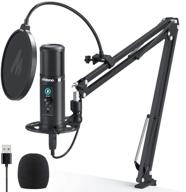
Professional USB Microphone with Zero Latency Monitoring - MAONO AU-PM422: 192KHZ/24BIT Cardioid Condenser Mic with Touch Mute Button and Mic Gain Knob for Recording, Podcasting, Gaming, YouTube

19 Review

Revolutionize Your Sound with the Blue 1967 Yeti Pro USB Condenser Microphone, Multipattern

20 Review
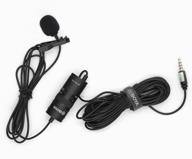
Microphone BOYA BY-M1 PRO, black

19 Review
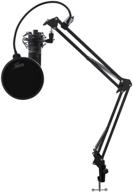
Audio-Technica AT2020USB+ Condenser Microphone Bundle with 🎙️ Knox Gear Shock Mount, Boom Arm, and Pop Filter

22 Review




